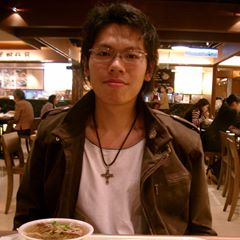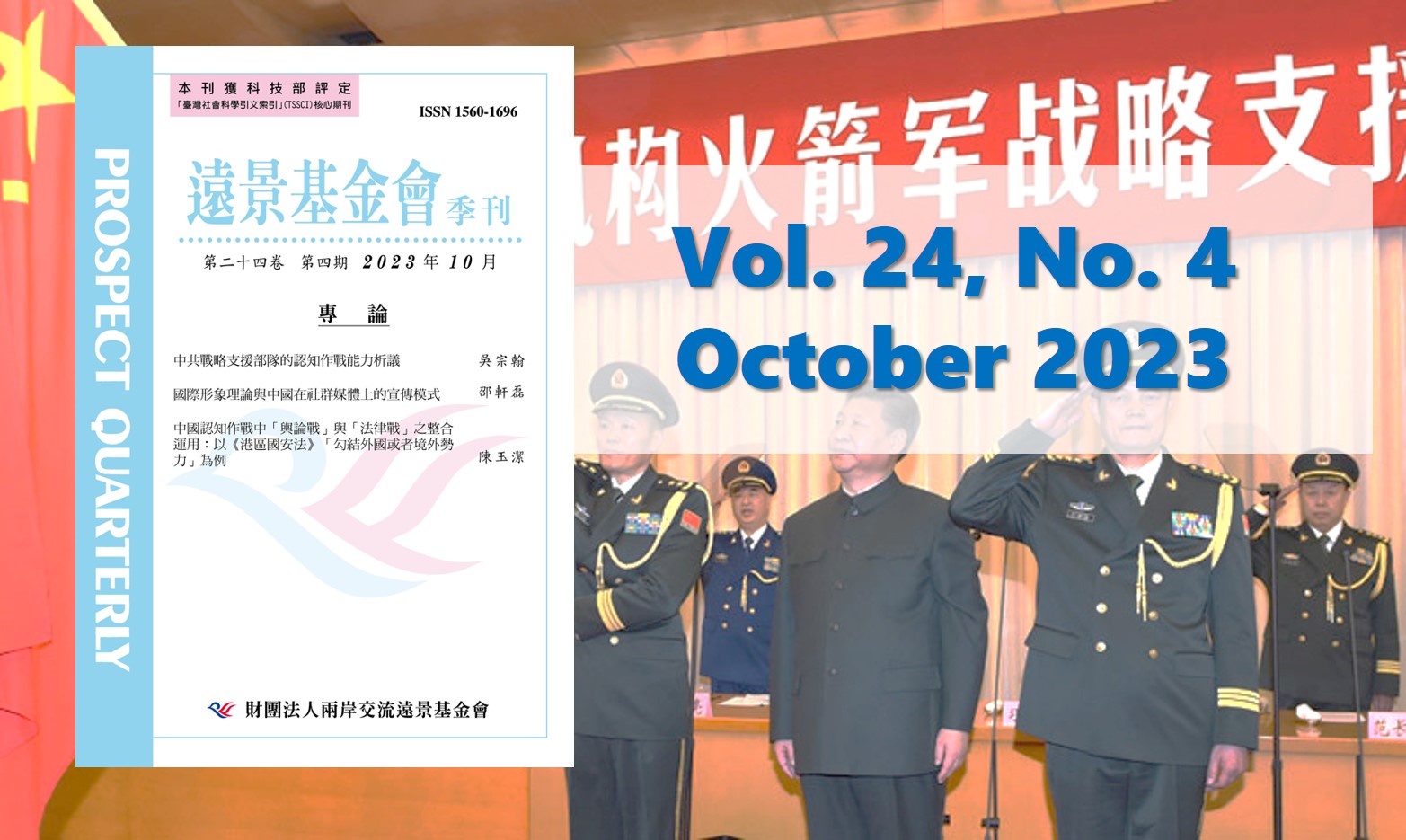Prospect Quarterly 24-4
The PLA Strategic Support Force and Its Cognitive Warfare Capabilities
Tsung-han Wu
(Assistant Research Fellow,
Division of Cyber Security and Decision-Making Simulation,
Institute for National Defense and Security Research)
Abstract
Cognitive warfare has been one of the most pressing issues for all countries in recent years. This paper focuses on the People’s Liberation Army (PLA) Strategic Support Force (SSF), examining its cyber units, Network Systems Department, and its understandings of and practice of cognitive warfare. It argues that the PLA’s understanding of cognitive warfare is derived from the evolution of the concepts of information warfare, the Three Warfares (public warfare, legal warfare, and psychological warfare) as well as cognitive warfare itself. Furthermore, the Network Systems Department of the SSF deserves more in-depth research, as the department is responsible for the practice of cognitive warfare. This paper then analyzes the SSF’s activities during China’s military exercises surrounding Taiwan following the visit by Nancy Pelosi in August 2022. Finally, it examines the current mechanism to countering disinformation as the way to counter cognitive warfare, and provides some policy suggestions.
Keywords: Cognitive Warfare, Three Warfares, Strategic Support Force, Cyberwarfare, Information Warfare
International Image Theory and China’s Propaganda Model on Social Media
Hsuan-lei Shao
(Associate Professor, Department of East Asian Studies,
National Taiwan Normal University)
Abstract
What is the nature of the posts China is making on social media? What are the main features of its publicity model? This article analyzes 43,183 posts from the official media People’s Daily on Weibo from 2019 to 2021. This study is based on the “international image theory” and uses numbers of likes, comments, and reposts for each post. The posts by official media can be classified into five types: social news, policy, survey interaction, current affairs, and daily life. They have corresponding characteristics in each index. Among them, the comment/ repost ratio is an observable indicator. Most of the “policy and current affairs news” have a large number of reposts — higher than the number of comments — and in some cases this can be even higher than the number of likes. The reposts tend to be the secondary transmission. In the sentiment analysis category, reposts of positive energy posts have a higher volume than negatives (but negative energy posts can get likes as well as positive ones). Through these processes, we can observe the behavior patterns of Chinese state media and establish a research process. This process and algorithm can be optimized and used more widely in future.
Keywords: China, Propaganda, Weibo, Social Media, Clustering
The Interaction of “Public Opinion Warfare” and “Legal Warfare” in Cognitive Warfare: A Case Study of “Colluding with Foreign or Overseas Forces” in the Hong Kong National Security Law
Yu-jie Chen
(Assistant Research Professor, Institutum Iurisprudentiae Academia Sinica)
Abstract
This article discusses how China, as a user of cognitive warfare, interactively deploys its homegrown concepts of “public opinion warfare” (yülunzhan) and “legal warfare” (falüzhan), including its modes of operation, targets, and goals. As a case study, this research focuses on the “crime of colluding with foreign or overseas forces to endanger national security” in the Law of the People’s Republic of China on Safeguarding National Security in the Hong Kong Special Administrative Region, analyzing how China resorts to different strategies in the realm of cognitive warfare. The study shows that public opinion warfare serves the function of guiding, activating, and justifying legal warfare. After legal warfare has been launched, public opinion warfare continues to serve and assist the law in attacking specific targets; on the other hand, legal warfare ostensibly provides credibility to the controversial information released to the public by public opinion warfare. These two types of warfare continue to have a mutually reinforcing relationship, with the aim of silencing local civil society and severing its connections with the international community.
Keywords: Cognitive Warfare, Public Opinion Warfare and Legal Warfare, Anti-extradition Movement, The Law of the People’s Republic of China on Safeguarding National Security in the Hong Kong Special Administrative Region of the People’s Republic of China, Crime of Colluding with Foreign or Overseas Forces to Endanger National Security




